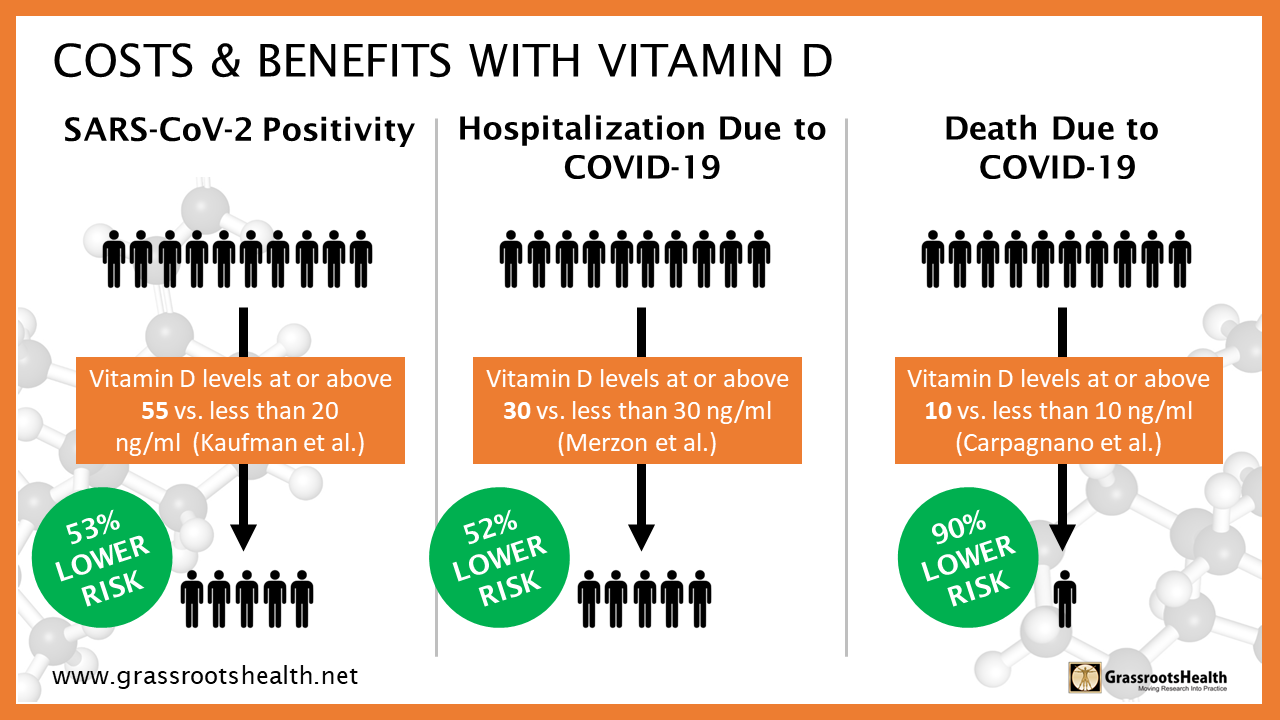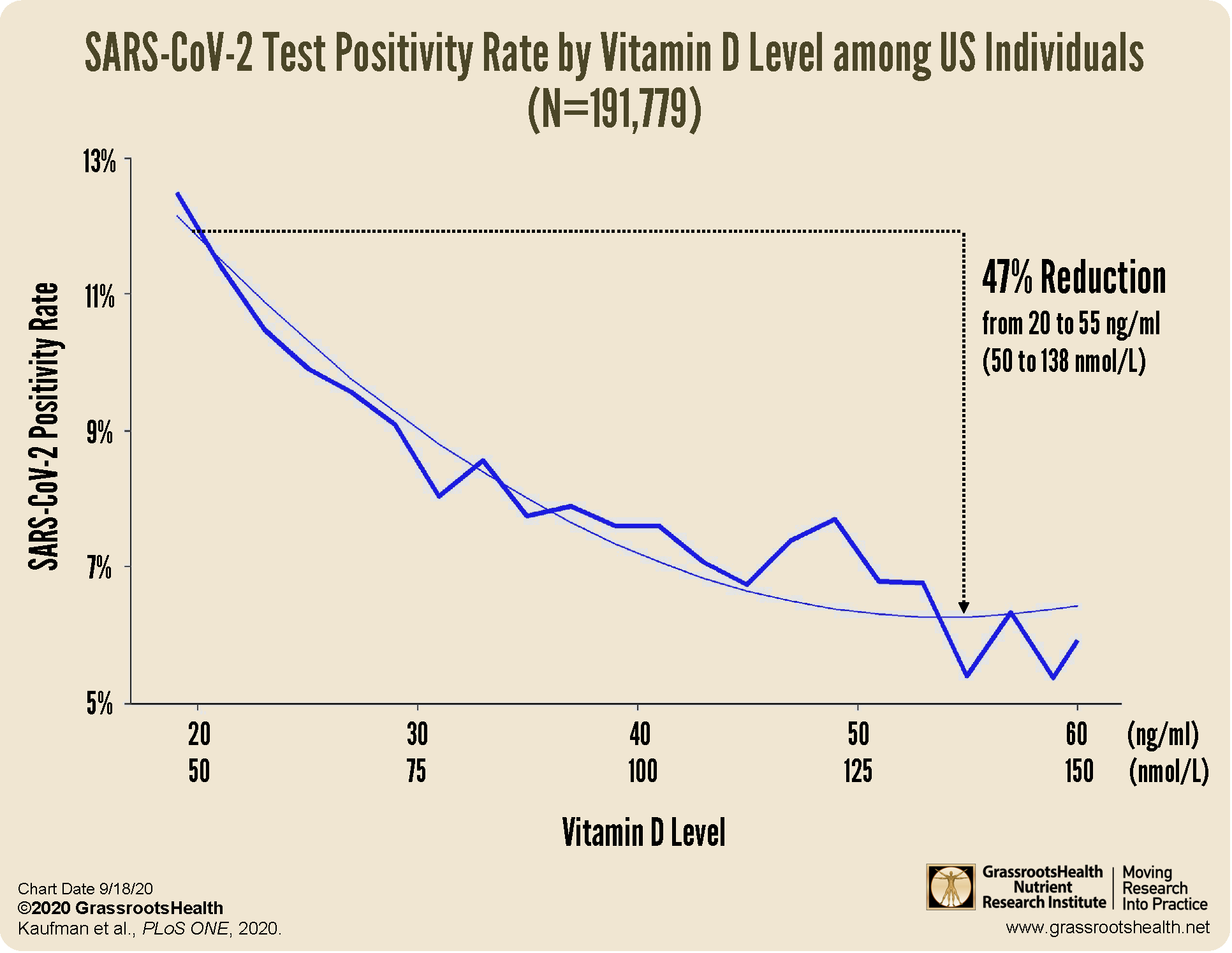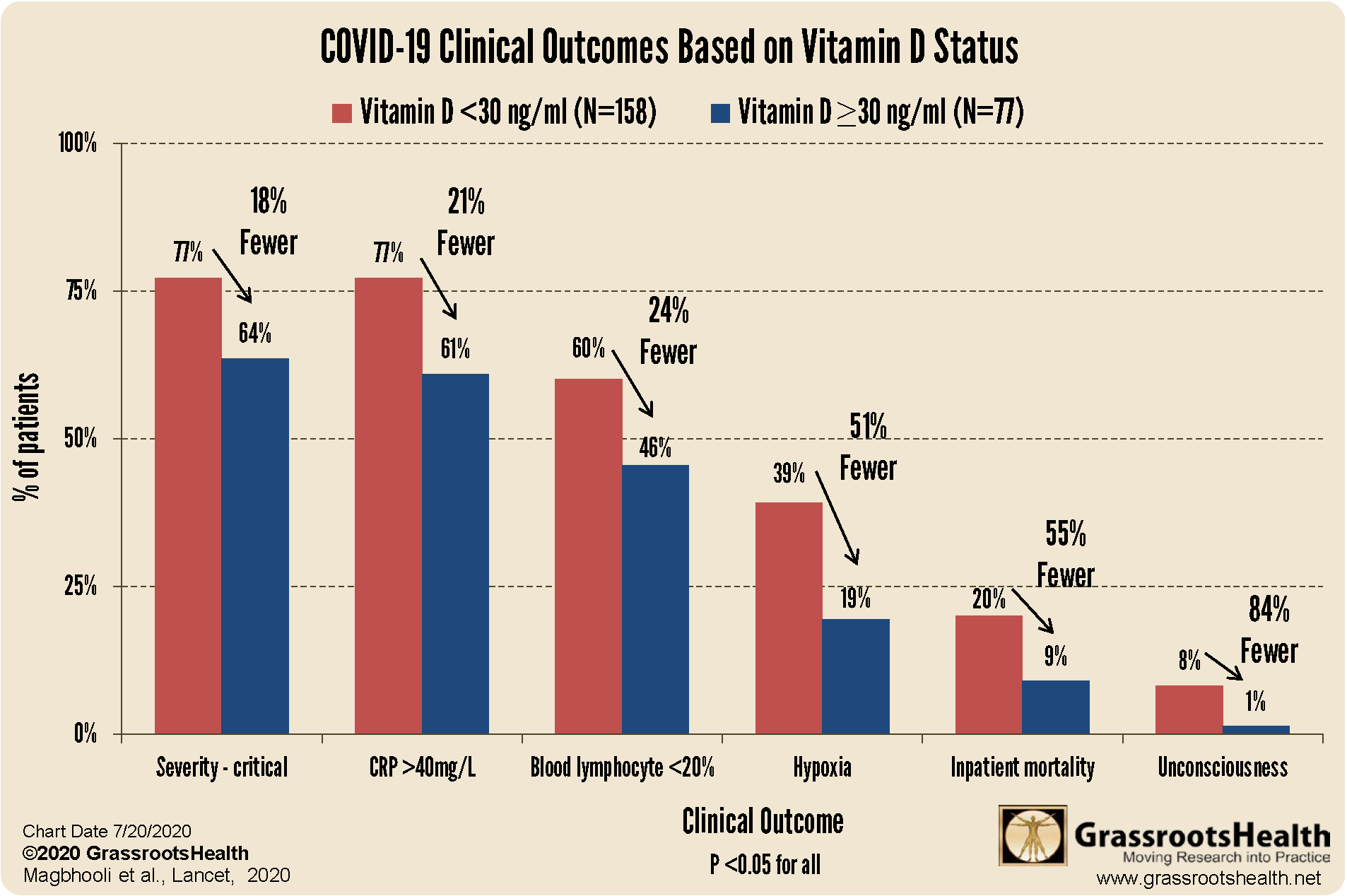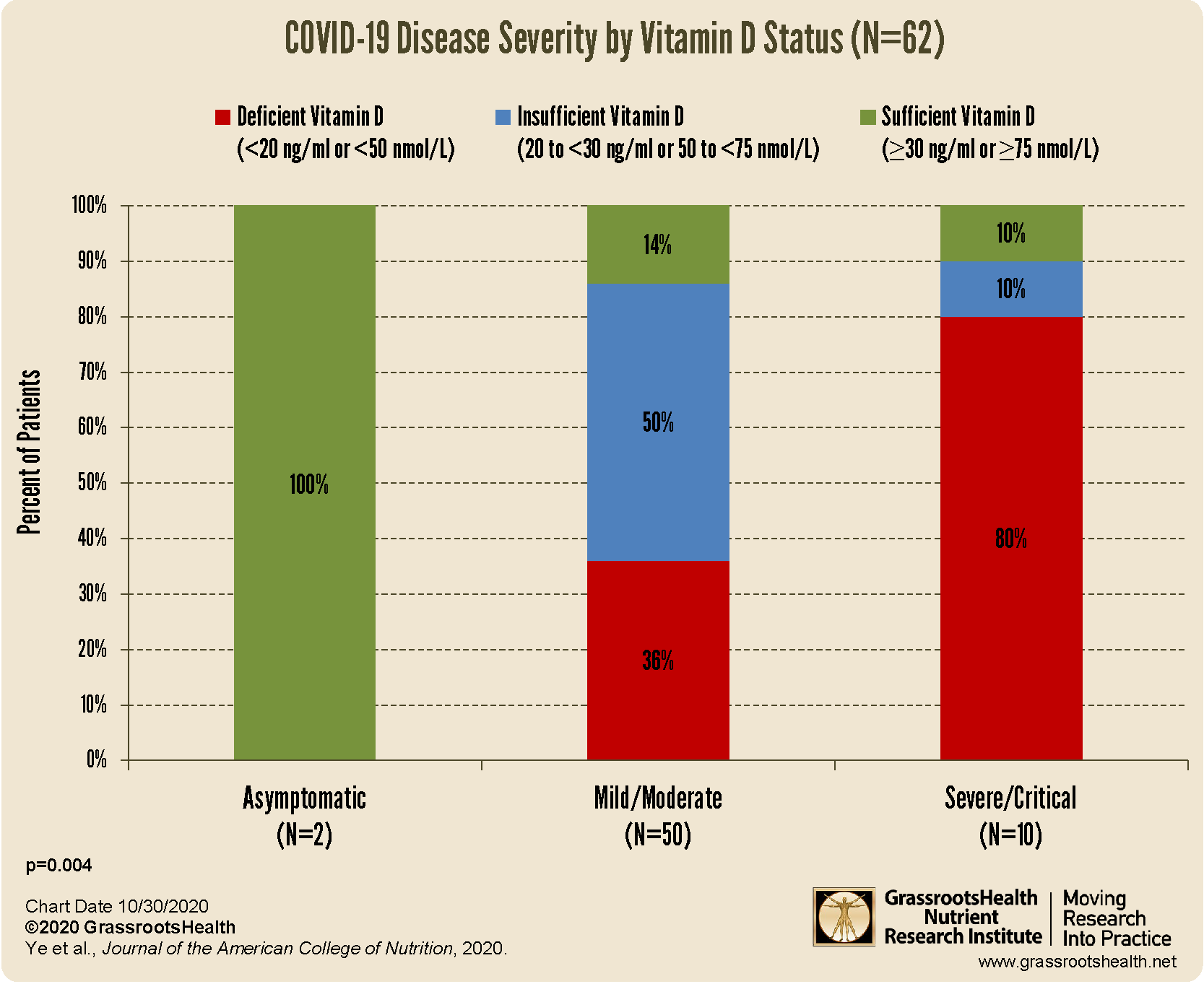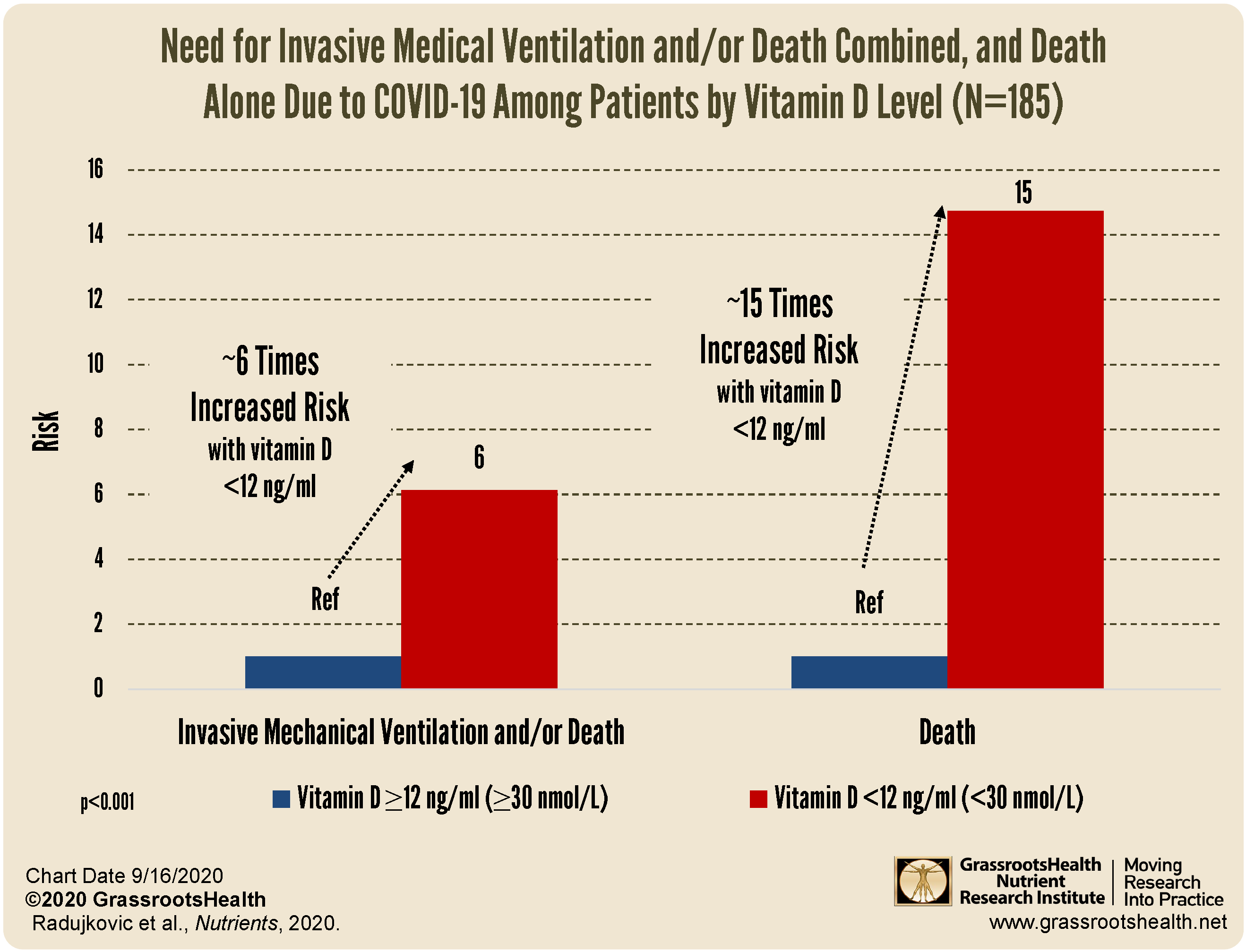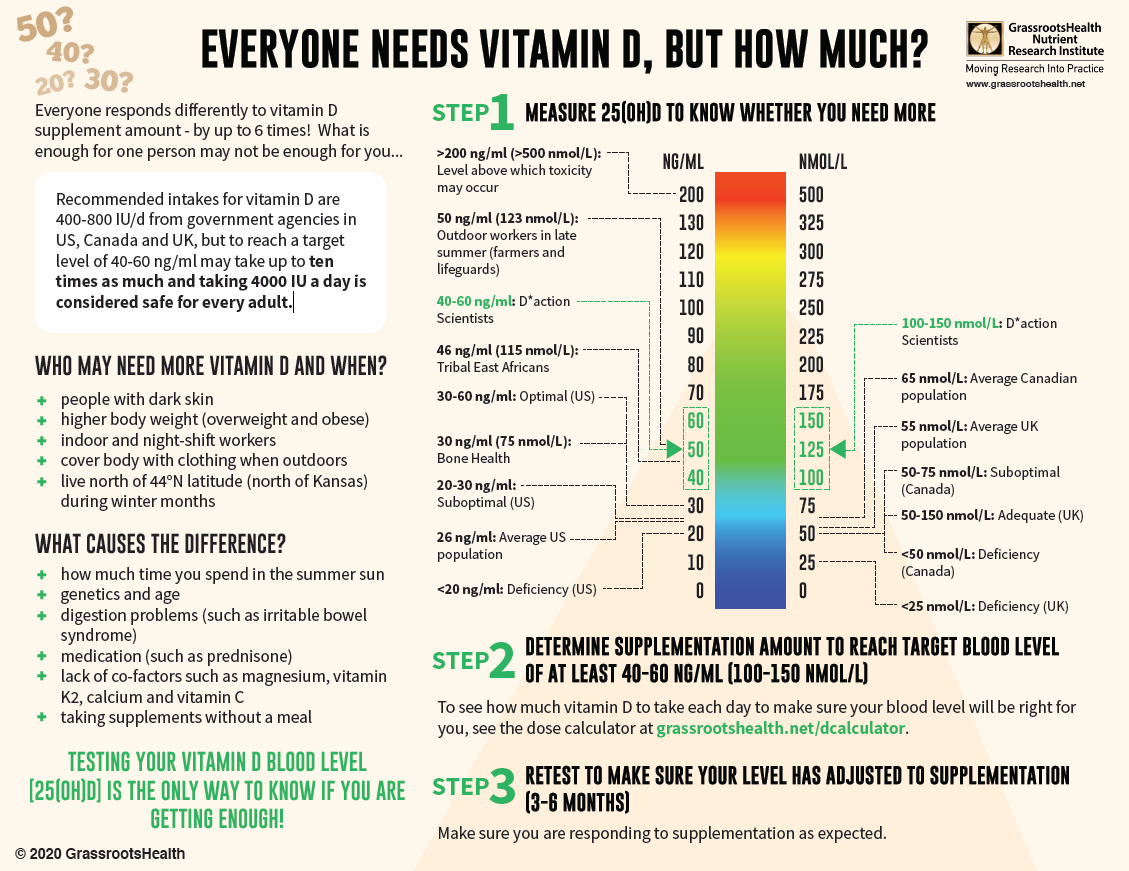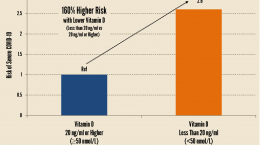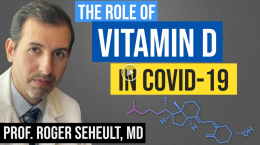Published on December 9, 2020
There is no need to wait for further clinical trials to increase use of something so safe, especially when remedying high rates of deficiency/insufficiency should already be a priority
It’s TIME to take action to save lives and end this pandemic! Could you help PREVENT the majority of deaths due to COVID-19? What is it costing you/us not to take action NOW?
There is much published research that supports a clear link between vitamin D and COVID-19 showing that higher vitamin D levels are associated with decreased risk, severity, and death due to COVID-19. The above are just a few examples. The time to act on this is NOW.
Share this Call to Action TODAY!
Over 100 Scientists, Doctors, & Leading Authorities Call For Increased Vitamin D Use To Combat COVID-19:
https://vitamind4all.org/letter.html
(2-page letter)
The letter (also below) was written and approved by over 100 of the world’s top scientists and experts on vitamin D – over 50 signatories are professors, over 50 are medical doctors. Signatories come from 19 different countries.
If you are an influential authority and would like to add your signature, please fill out this form:
https://docs.google.com/forms/d/e/1FAIpQLSdTYIf6V5eFfRDSWsbB6nU696KrMFP9ldvcQ0okXhqb7NYgyg/viewform
Scientific evidence indicates vitamin D reduces infections & deaths
To all governments, public health officials, doctors, and healthcare workers,
Research shows low vitamin D levels almost certainly promote COVID-19 infections, hospitalizations, and deaths. Given its safety, we call for immediate widespread increased vitamin D intakes.
Vitamin D modulates thousands of genes and many aspects of immune function, both innate and adaptive. The scientific evidence1 shows that:
- Higher vitamin D blood levels are associated with lower rates of SARS-CoV-2 infection.
- Higher D levels are associated with lower risk of a severe case (hospitalization, ICU, or death).
- Intervention studies (including RCTs) indicate that vitamin D can be a very effective treatment.
- Many papers reveal several biological mechanisms by which vitamin D influences COVID-19.
- Causal inference modeling, Hill’s criteria, the intervention studies & the biological mechanisms indicate that vitamin D’s influence on COVID-19 is very likely causal, not just correlation.
Vitamin D is well known to be essential, but most people do not get enough. Two common definitions of inadequacy are deficiency < 20 ng/ml (50 nmol/L), the target of most governmental organizations, and insufficiency < 30 ng/ml (75 nmol/L), the target of several medical societies & experts.2 Too many people have levels below these targets. Rates of vitamin D deficiency <20 ng/ml exceed 33% of the population in most of the world, and most estimates of insufficiency <30 ng/ml are well over 50% (but much higher in many countries).3 Rates are even higher in winter, and several groups have notably worse deficiency: the overweight, those with dark skin (especially far from the equator), and care home residents. These same groups face increased COVID-19 risk.
It has been shown that 3875 IU (97 mcg) daily is required for 97.5% of people to reach 20 ng/ml, and 6200 IU (155 mcg) for 30 ng/ml,4 intakes far above all national guidelines. Unfortunately, the report that set the US RDA included an admitted statistical error in which required intake was calculated to be ~10x too low.4 Numerous calls in the academic literature to raise official recommended intakes had not yet resulted in increases by the time SARS-CoV-2 arrived. Now, many papers indicate that vitamin D affects COVID-19 more strongly than most other health conditions, with increased risk at levels < 30 ng/ml (75 nmol/L) and severely greater risk < 20 ng/ml (50 nmol/L).1
Evidence to date suggests the possibility that the COVID-19 pandemic sustains itself in large part through infection of those with low vitamin D, and that deaths are concentrated largely in those with deficiency. The mere possibility that this is so should compel urgent gathering of more vitamin D data. Even without more data, the preponderance of evidence indicates that increased vitamin D would help reduce infections, hospitalizations, ICU admissions, & deaths.
Decades of safety data show that vitamin D has very low risk: Toxicity would be extremely rare with the recommendations here. The risk of insufficient levels far outweighs any risk from levels that seem to provide most of the protection against COVID-19, and this is notably different from drugs & vaccines. Vitamin D is much safer than steroids, such as dexamethasone, the most widely accepted treatment to have also demonstrated a large COVID-19 benefit. Vitamin D’s safety is more like that of face masks. There is no need to wait for further clinical trials to increase use of something so safe, especially when remedying high rates of deficiency/insufficiency should already be a priority.
Therefore, we call on all governments, doctors, and healthcare workers worldwide to immediately recommend and implement efforts appropriate to their adult populations to increase vitamin D, at least until the end of the pandemic. Specifically to:
- Recommend amounts from all sources sufficient to achieve 25(OH)D serum levels over 30 ng/ml (75 nmol/L), a widely endorsed minimum with evidence of reduced COVID-19 risk.
- Recommend to adults vitamin D intake of 4000 IU (100 mcg) daily (or at least 2000 IU) in the absence of testing. 4000 IU is widely regarded as safe.5
- Recommend that adults at increased risk of deficiency due to excess weight, dark skin, or living in care homes may need higher intakes (eg, 2x). Testing can help to avoid levels too low or high.
- Recommend that adults not already receiving the above amounts get 10,000 IU (250 mcg) daily for 2-3 weeks (or until achieving 30 ng/ml if testing), followed by the daily amount above. This practice is widely regarded as safe. The body can synthesize more than this from sunlight under the right conditions (e.g., a summer day at the beach). Also, the NAM (US) and EFSA (Europe) both label this a “No Observed Adverse Effect Level” even as a daily maintenance intake.
- Measure 25(OH)D levels of all hospitalized COVID-19 patients & treat w/ calcifediol or D3, to at least remedy insufficiency <30 ng/ml (75 nmol/L), possibly with a protocol along the lines of Castillo et al ‘20 or Rastogi et al ’20, until evidence supports a better protocol.
Many factors are known to predispose individuals to higher risk from exposure to SARS-CoV-2, such as age, being male, comorbidities, etc., but inadequate vitamin D is by far the most easily and quickly modifiable risk factor with abundant evidence to support a large beneficial effect. Vitamin D is inexpensive and has negligible risk compared to the considerable risk of COVID-19.
Please Act Immediately
View the letter with all references and signatories here.
Summary: Vitamin D & COVID-19
It’s TIME to start saving lives! If you can help PREVENT the majority of the death, it’s time! What’s it costing you/us not to take action NOW?
There is much published research that supports a clear link between vitamin D and COVID-19 showing that higher vitamin D levels are related to:
a decreased risk of testing positive for COVID-19
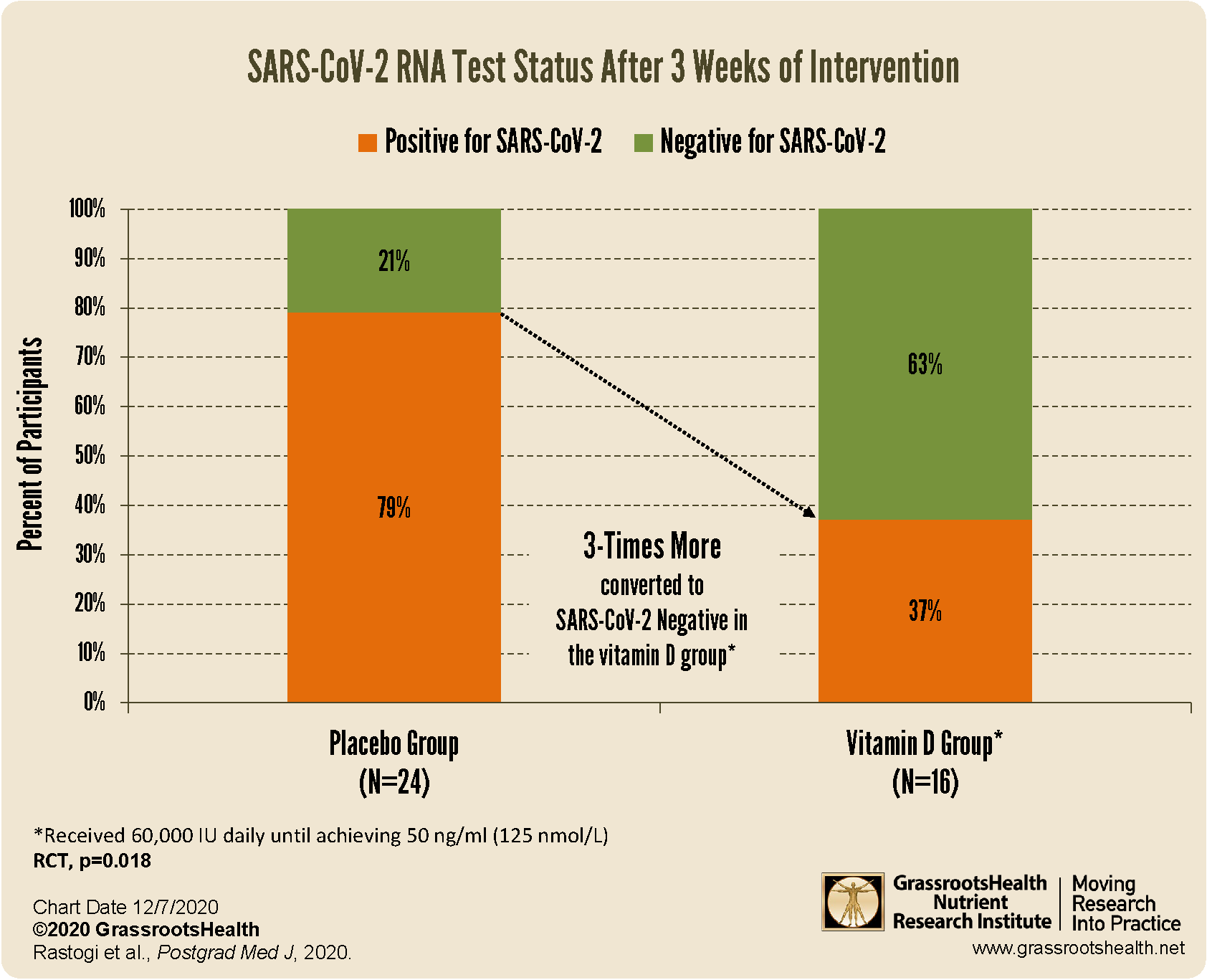 increased viral SARS-CoV-2 RNA clearance
increased viral SARS-CoV-2 RNA clearance
better clinical outcomes among patients with COVID-19
decreased risk of death due to COVID-19
Everyone needs vitamin D! Here’s how to tell how much you might need, and who may need more – people who are overweight or who have darker skin are among those at increased risk of deficiency.
Be sure to educate yourself on the benefits and importance of vitamin D for immune health, and take steps to ensure you and your loved ones are getting enough.
You can review all of the COVID-19 and immune health information we have shared on this page.
Ensure Vitamin D Levels of 40-60 ng/ml (100-150 nmol/L) for You, Your Children, Loved Ones
Correcting a vitamin D deficiency at any age and any time of life decrease potential disease severity and improve outcomes! Test your vitamin D level today, learn what steps to take to improve your level, and take action to achieve and maintain a vitamin D level of 40-60 ng/ml (100-150 nmol/L).
Using the GrassrootsHealth Custom Kit Builder, you can create a test kit that measures your status of vitamin D and other important nutrients (such as omega-3s, zinc and magnesium), as well as your CRP level to measure inflammation. Click here to build and order your test kit today – measure your status and take the steps necessary to improve them if needed; make an impact on your health today and for your future! When you know what your levels are, you can determine next steps to take and how much supplementation may be needed if you are not at your target levels.
Enroll now with the Full Immune Boost Panel (which includes tests for vitamin D, Omega-3 Index, magnesium, zinc, selenium, copper, and hsCRP), and get 10% off when you use coupon code BoostTen at checkout.


